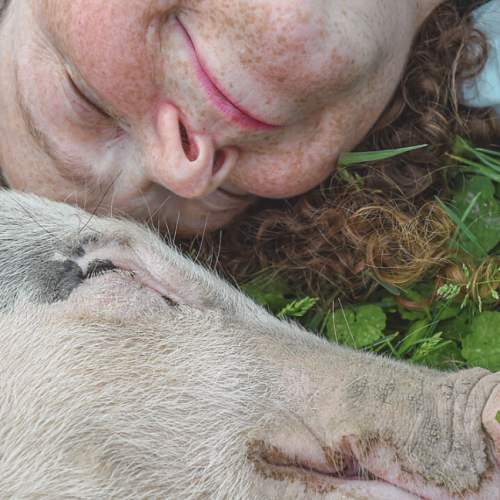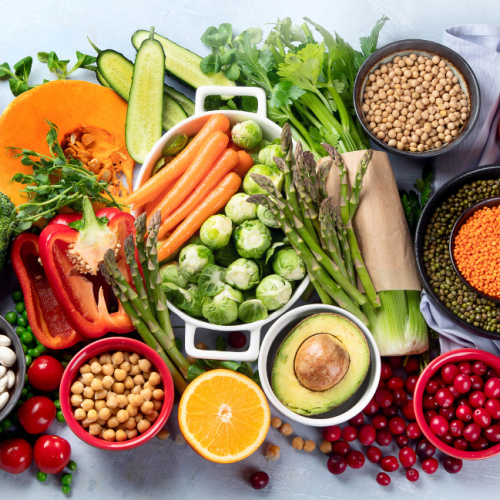Grain Drain: How Animal Feed Devours Our Natural Resources
The term ‘food waste’ conjures images of dinner scraped into the bin, of passing the Use By and Best Before dates, of parental criticism for not eating your vegetables - “think of all the starving kids in the world!”
But what if food waste wasn’t so much a consumer issue, rather more of a problem at the production level?
When we look beyond the scraped-plates, and look at the resources consumed in producing our food, we can see the biggest driver of food waste that almost nobody is talking about - the inefficient use of animal feed grown for livestock.

The resources required to raise animals and process them into food products is significantly higher than the resources required to produce most plant-based foods.
The biggest waste no-one is talking about!?
The HUGE energy input versus the minimal output when growing animals for food.
Let’s look at some examples: Brian Kateman writes in Forbes (2022): “Specifically, in the case of chicken, it takes nine calories of feed to produce one calorie of meat for the end consumer... And poultry is actually one of the more efficient types of meat, input to output”.
When you think about it, it makes perfect sense - consider how much food we need to eat just to fuel our daily routines, i.e. before we build any new muscle. If you've ever raised a teenager or can remember back to when you were a teenager you can appreciate the epic food feasts needed for those growth spurts.
And then consider that minimal parts of an animal are actually suitable for human consumption. Dr. Jillian Fry, Assistant Professor of Public Health at Towson University notes: "Depending on the species, up to 60 percent of an animal may be inedible to humans—the bones, guts, etc…A third or less of calories and protein contained in feed make it to people as meat".

Up to 60 percent of an animal may be inedible to humans - the bones, guts, etc…A third or less of calories and protein contained in feed make it to people as meat.
Another major issue is the indefensible use of land to raise and harvest all of that feed for livestock.
For example, 40% of the UK’s most productive agricultural land is used to grow food for farmed animals instead of people. (WWF’s Future of Feed report, 2022).
Producing massive quantities of animal feed has negative impacts on the land those crops are produced on, and in our global economy the devastation extends well beyond our national borders.
The majority of soy imported to Europe is used as animal feed (soy meal) and is linked to deforested areas and converted savannahs and grasslands in South America - including the Amazon. Around 65% of the UK’s soy is imported from Argentina, Brazil and Paraguay, which all feature in the top ten countries for deforestation and biodiversity loss, so removing soy from animal feed would reduce land conversion pressure.

Nearly half of global deforestation is to clear land to grow crops - with soy fed to chickens and pigs the number one driver.
According to new research from the World Wildlife Fund (WWF) “the average European consumes 60.6 kg of soy per year” and we’re not talking tofu, edamame or tempeh -
"90% of the soy Europeans eat is not listed as an ingredient. Instead, it is consumed indirectly - as soy is the main animal feed used to produce meat, eggs, fish and dairy products.”
Farming animals is an extremely inefficient way to produce food in a world approaching 10 Billion people.
Analysis of global agricultural production (Cassidy et al., 2013) found that better use of existing croplands can feed four billion more people!
Surprise surprise, the solution is:
- Shifting away from growing crops for animal feed and fuel
- Growing crops direct for human consumption

Any viable strategy to improve global food security must include reducing animal based food consumption as part of the equation.
A shift to more plant based protein will allow huge amounts of crops to be redirected towards solving global food insecurity.
Only 48% of the world’s cereals are eaten by humans. Think rice, oats, wheat, bread, and so on. A whopping 41% is used for animal feed, and 11% for biofuels. (Our World in Data: Ritchie, 2021).
Even more startling: “Only 7% of soy goes towards human foods such as tofu, tempeh, soy milk and other substitute products.” The most important customer of U.S. soybeans is animal agriculture, which consumes 97% of U.S. soybean meal.
Clearly we don’t need to ramp up global food production to feed the world. We grow more than enough food to feed the world’s population, but a huge portion of its value is wasted through feeding livestock.
"In 2022 we managed to feed and slaughter 75+ billion land animals, while there are 8+ billion humans on earth, many of whom are starving."
The science could not be clearer, if we want to address food insecurity, we must limit our consumption of dairy and meat. It’s a win for the animals, a win for humans, and a win for the environment.
Take action - Sign up for No Meat May!
No Meat May is such a fun way to upskill and learn how to incorporate more sustainable plant-rich meals. Why not challenge your friends and family to join you for No Meat May? It's a powerful way to change things up, and it's all free! What do you say—are you in?
Share this article - spread the word - and thank you, as always, for reading!
Information sourced from Forbes, The Guardian, Our World in Data, World Wildlife Fund, A Well Fed World, IOP Publishing and Faunalytics.











5 Comments
I’m not saying I’m perfect as I do still eat the odd farm fresh eggs, but not a morsel of meat, fish or dairy has passed my lips for many years. I wish I could say the same for the majority of my friends ?
I had no ideal how much waste is created by animal farming !!
Meat consumption in western countries is so excessive. We have no idea how destructive our daily eating habits negatively impacts the planet, animals and humanity. Time for a big “ wake up call “ !!☎️ ?